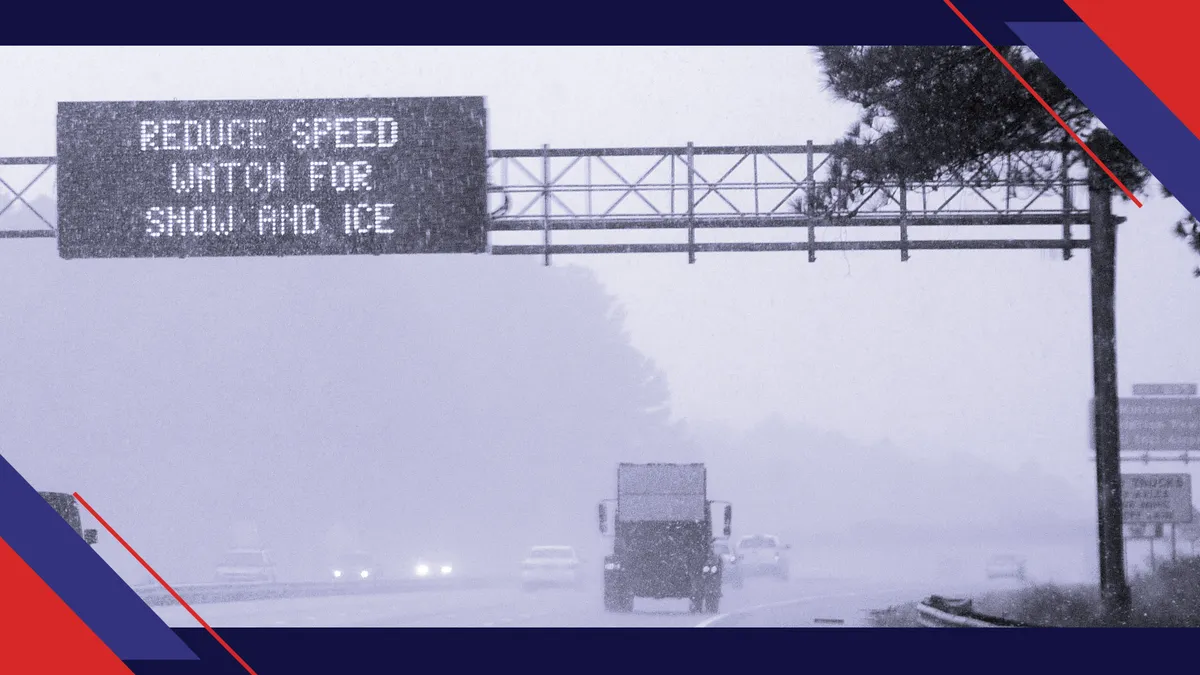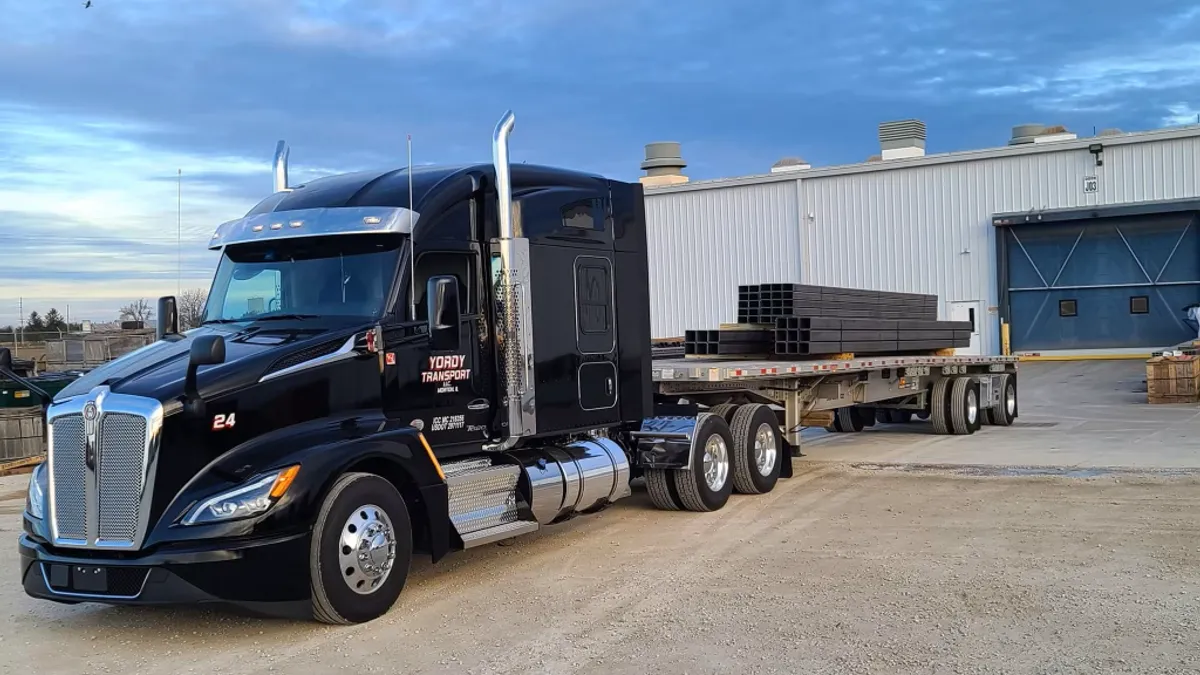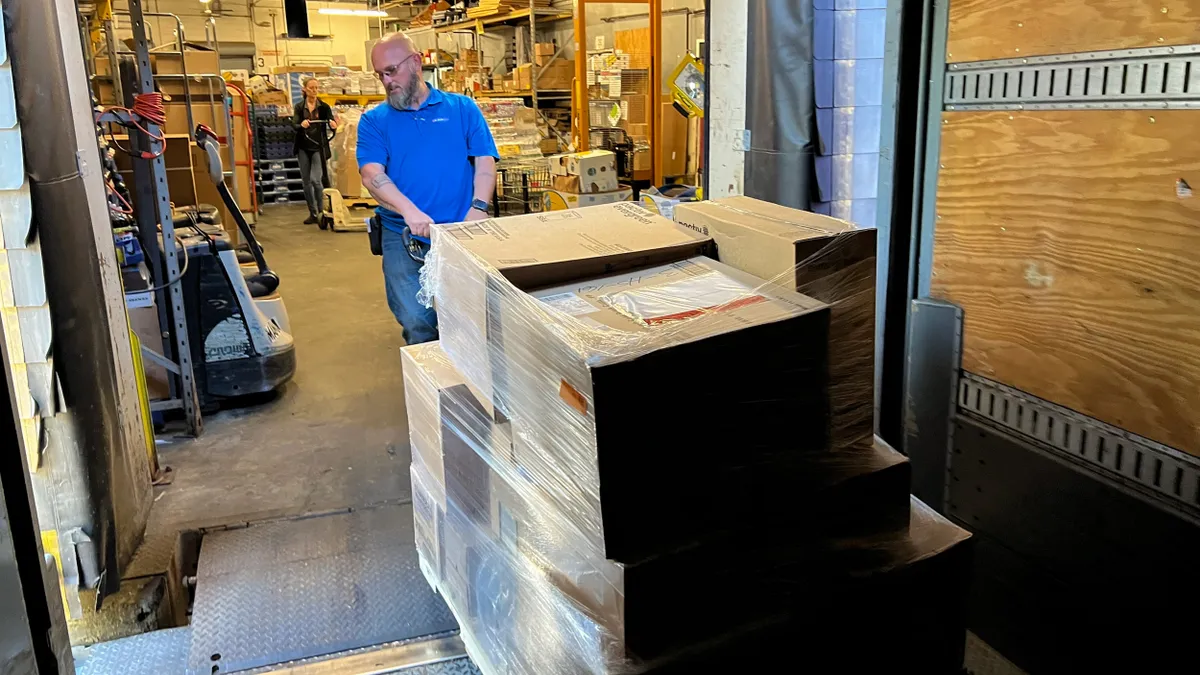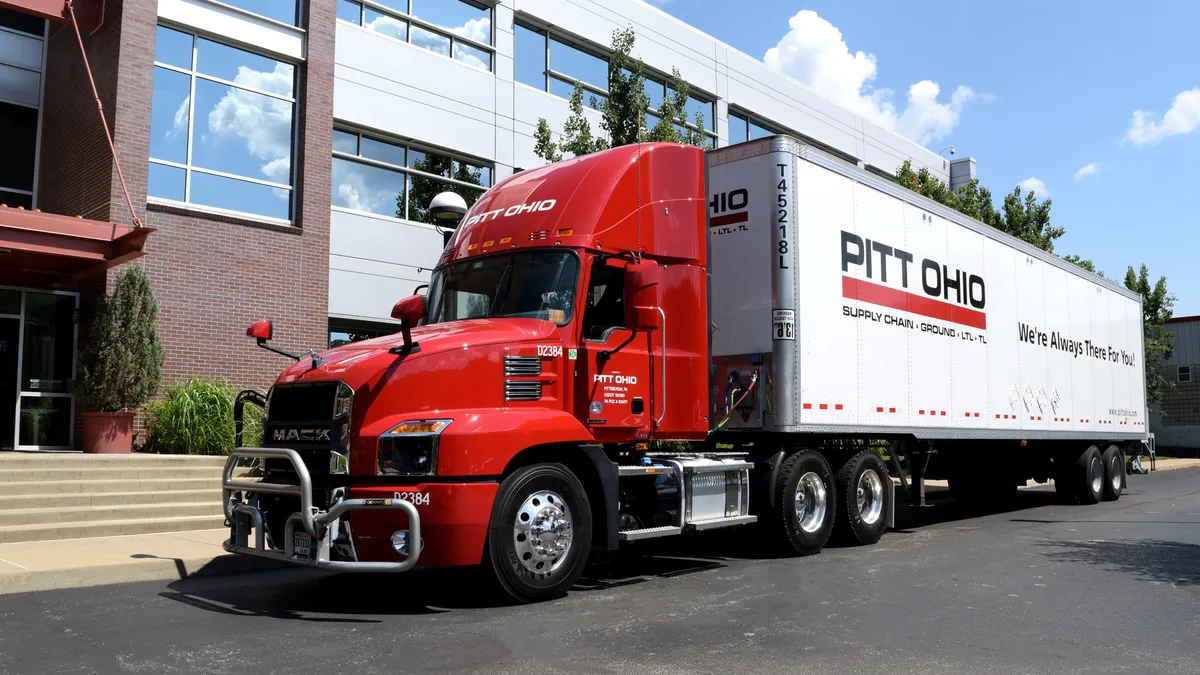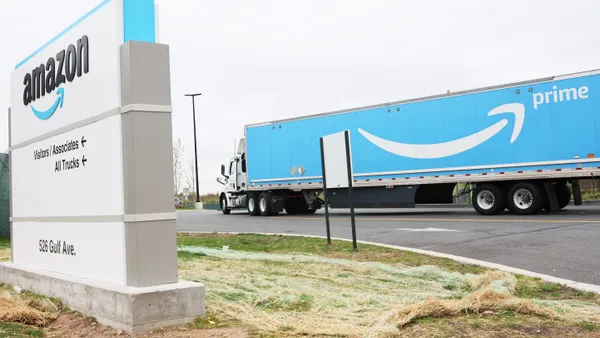This article is part of a series on the impacts climate change and severe weather have on supply chains. View the entire series here.
Heavy rain pelting the windshield. Howling winds over an interstate. A blizzard whiteout. Blinding fog.
These are dangerous conditions for any driver of any vehicle.
But what if there is no driver? What if the truck is being driven by a computer?
"Self-driving systems have some technical advantages over human drivers," a spokesperson for Torc Robotics, a partner of Daimler since 2019, said in an email. "These virtual drivers can sense and acquire information much faster than humans which translates to a quicker reaction time."
Kodiak Robotics' autonomy system, the Kodiak Driver, is being built to drive in extreme weather, skids and other complex driving scenarios, explained Daniel Goff, the company's head of policy.
"One of the advantages of developing autonomous freight vehicles is that driverless ones can prioritize the safety of people in surrounding vehicles over its own safety," Goff said.
Radar and sensors cut through the fog
Torc Robotics' sensor suite includes radar, lidar and cameras, the spokesperson said, which allows the autonomous vehicle to "see" a broader field-of-view than a human can at any one time.
Lidar uses lasers to measure the distance and shapes of objects, producing high definition, three-dimensional views of what is happening around an AV. That means the sensors can operate in spite of shadows or bright light reflected off surfaces like wet roads, the spokesperson added. And lidar can see farther and in more detail than people can in low-light situations.
"Humans drive with their eyes and ears," Goff said. "But radar systems cut through fog and snow without too much trouble." AVs can precisely calculate the length of distance needed to stop and how much room to give other vehicles, he said.
Heavy rain can disrupt radar, however. A study published in IEEE Vehicular Technology Magazine found "severe rainfall conditions" can reduce a radar's detection range by up to 55%.
"One of the advantages of developing autonomous freight vehicles is that driverless ones can prioritize the safety of people in surrounding vehicles over its own safety."

Daniel Goff
Head of Policy for Kodiak Robotics
For Waymo, each sensor compliments the others, providing vehicles with a richer view of the world. That makes them safer and more capable than humans, a spokesperson said in an email.
"A camera's ability is restricted in weather, poor lighting and when trying to see around corners. That's why it's helpful to have Lidar and radar to complement the cameras," the Waymo spokesperson said. "We also have a number of innovative cleaning tools like wipers and nozzles to ensure the Waymo Driver [autonomy system] can always see through any condition."
But that doesn't mean AVs can drive in every type of adverse condition. They may need to pull over in extreme weather, just like humans do, Goff said. But with humans, the decision to wait out a storm is generally a judgment call. An AV has access to really granular data to inform these kinds of decisions.
"For example, if an autonomous truck senses weather conditions have reduced visibility to a point that it's not safe to drive, it can make that decision based on data, not instinct," said Goff. "[Automated driving systems] have a good detection system that identifies weather that might hold the trucks back. They know if they are not operating the way they should."
Making the case: Is an AV safer than a human?
It'll be years until trucking firms can add AVs to their fleets at scale. But many of the industry's largest fleets have started the process. In May, TuSimple announced it received 6,775 reservations for the trucks it's developing with Navistar.
When fleets are building their justifications for getting involved with AVs, how the equipment handles adverse weather should be a priority, experts said. It's an important part of what AV developers call a safety case — a comprehensive document that demonstrates that an AV is safer than a human.
"All of our trucks operate with safety drivers until we can absolutely demonstrate that an AV is safer than a human driver," Goff noted. "We are currently working on driving in different weather conditions and that's key to proving our safety case."
A key part of building a safety case is testing in a wide range of environmental conditions, including harsh ones. Unless this testing is done, the technology can't be employed, said Goff.
A 2016 report from the Department of Transportation called on AV companies to test in adverse weather conditions, because such conditions "can severely limit the functionality of sensors and cameras," the paper stated. "Although the applications appear to work well in dry, sunny weather, those are just the best-case scenarios. The real test for autonomous vehicle applications will be when the roads are wet or even icy and invisible to the sensors."
Kodiak has tested its trucks in Texas thunderstorms, as well as some hot temperatures, Goff said.
TuSimple, Embark and Waymo are running tests in Arizona, Kevin Biesty, deputy director at the Arizona DOT, told Transport Dive in early April. The state offers a range of weather conditions.
"A lot of these companies are testing in multiple locations, because they're developing systems that need to operate in various environments," Biesty said. "Arizona offers a lot of different unique challenges."
Northern Arizona has snow and ice, which can test the vehicles ability to de-ice systems, which Goff noted is "really important." The deserts have dust storms and high temperatures.
"We believe continued testing in controlled environments, as well as improvements in sensor capabilities will strengthen AV performance in inclement weather," said the Torc spokesperson.
The basics of how to operate a vehicle when visibility is low remains the same for humans and autonomous vehicles, Goff said: All must drive safely and carefully. It's just a matter of who, or what, is doing the driving.
S.L. Fuller and Shefali Kapadia contributed to this report.


